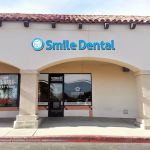Preventing Gum Recession: Essential Tips for Maintaining Healthy Gums
Gum recession is a dental issue that many people face, yet it is often overlooked until it causes significant discomfort or damage. Preventing gum recession is crucial not only for maintaining the health of your gums but also for protecting your overall oral health. Gum recession occurs when the gum tissue pulls back from the tooth, exposing the tooth roots. This can lead to increased tooth sensitivity, greater risk of cavities, and even tooth loss if left untreated. Understanding how to prevent gum recession and recognizing its early signs is vital for preserving a healthy smile.
1. What is Gum Recession?
Gum recession refers to the process in which the gum tissue that surrounds the teeth starts to shrink or pull back, revealing more of the tooth or even the tooth's root. This condition is common among adults and can happen for a variety of reasons. Often, it develops slowly and goes unnoticed until it has progressed to an advanced stage. Gum recession can affect any part of the gum, but it most commonly occurs along the gumline of the lower front teeth and the upper molars. The main cause of gum recession is aggressive brushing, but other factors like genetics, gum disease, smoking, and poor oral hygiene can contribute as well.
2. The Causes of Gum Recession
Understanding the causes of gum recession is the first step in preventing it. Here are some of the most common factors that contribute to this condition:
- Aggressive Brushing: Brushing your teeth too hard or using a hard-bristled toothbrush can wear down the gum tissue, leading to recession. It’s essential to use a soft-bristled toothbrush and avoid applying excessive pressure when brushing.
- Periodontal Disease: Gum disease is one of the leading causes of gum recession. When plaque and tartar build up along the gumline, it can lead to inflammation and infection, causing the gums to pull away from the teeth.
- Genetics: Some people are genetically predisposed to thin or weak gums, making them more likely to experience gum recession even with proper oral care.
- Tobacco Use: Smoking or using other tobacco products can damage the gum tissue and reduce blood flow to the gums, contributing to gum recession.
- Teeth Grinding: Grinding your teeth, especially at night, can put unnecessary pressure on the gums, leading to their gradual recession.
3. Early Signs of Gum Recession
Recognizing the early signs of gum recession is essential for preventing further damage. Early detection allows for more effective treatment options. Common signs include:
- Sensitivity: If you experience sensitivity to hot, cold, or sweet foods, it could be a sign of gum recession. Exposed tooth roots are more sensitive than the rest of the tooth.
- Visible Gaps Between Teeth: Receding gums cause visible gaps or spaces between the teeth, which were not previously noticeable.
- Longer-Looking Teeth: As the gum tissue recedes, the teeth may appear longer. This is especially noticeable along the gumline.
- Pain or Discomfort: Gum recession can cause discomfort or tenderness in the gums, especially when brushing or eating.
4. Preventing Gum Recession: Practical Tips
Preventing gum recession requires consistent oral care and lifestyle changes. Here are some practical steps you can take to protect your gums:
- Use a Soft-Bristled Toothbrush: Switch to a soft-bristled toothbrush to avoid damaging your gums. Brushing gently with a soft brush will help protect your gums while still effectively cleaning your teeth.
- Practice Proper Brushing Technique: Instead of scrubbing, use gentle circular motions to clean your teeth. Avoid brushing aggressively along the gumline to prevent gum irritation.
- Floss Daily: Flossing removes plaque and food particles from between your teeth and along the gumline, preventing the buildup that can lead to gum disease.
- Quit Smoking: If you smoke or use tobacco products, quitting can significantly improve your gum health. Tobacco use weakens the gums and reduces blood flow, making them more prone to recession.
- Get Regular Dental Checkups: Regular visits to the dentist allow for early detection of gum disease or other issues that may lead to gum recession. Professional cleanings help remove plaque and tartar that can't be removed with regular brushing.
- Consider a Mouthguard: If you grind your teeth, a dentist can recommend a mouthguard to wear at night to protect your teeth and gums from unnecessary stress and pressure.
5. Treatment Options for Gum Recession
If gum recession has already occurred, there are several treatment options available to restore gum health and prevent further damage:
- Scaling and Root Planing: This deep cleaning procedure removes plaque and tartar from the roots of your teeth and smooths the root surfaces to help your gums reattach to the teeth.
- Gum Grafting: For more severe cases of gum recession, a gum graft may be performed. This procedure involves taking tissue from another part of your mouth and grafting it onto the affected area to restore the gumline.
- Laser Therapy: In some cases, laser therapy may be used to remove infected tissue and promote gum regeneration, helping to reduce the symptoms of gum recession.
6. Why Prevention is Key
While treatments for gum recession can help, preventing the condition in the first place is always the best option. Gum recession can lead to a host of dental problems, including tooth sensitivity, cavities, and even tooth loss. By taking simple steps to protect your gums, such as using a soft toothbrush, practicing proper brushing and flossing techniques, and visiting your dentist regularly, you can significantly reduce the risk of gum recession and maintain healthy gums for years to come.
Healthy gums are essential not just for your smile, but for your overall health. Untreated gum disease has been linked to a range of serious conditions, including heart disease, diabetes, and stroke. Preventing gum recession is a crucial step in maintaining both your oral and overall health.
Conclusion: Protect Your Gums Today!
Preventing gum recession is essential for preserving both your oral health and overall well-being. By following the simple steps outlined above, you can protect your gums from recession and reduce your risk of developing gum disease. If you're already experiencing the signs of gum recession, it’s important to seek treatment early to prevent further damage. Take action now by scheduling an appointment with a dentist and improving your oral care routine to ensure healthy gums for years to come. For more information on gum health and treatment options, visit Dentistry Toothtruth.







 Gentle Dental Moreno Valley4.0 (147 review)
Gentle Dental Moreno Valley4.0 (147 review) Tropic Dental Care | Cosmetic & Emergency Dentist Riverside4.0 (74 review)
Tropic Dental Care | Cosmetic & Emergency Dentist Riverside4.0 (74 review) Stephanie ML Wong, DMD, Inc.5.0 (1 review)
Stephanie ML Wong, DMD, Inc.5.0 (1 review) Smile Dental4.0 (495 review)
Smile Dental4.0 (495 review) Family Dentistry of Lakewood4.0 (321 review)
Family Dentistry of Lakewood4.0 (321 review) McDonough Endodontic Center4.0 (333 review)
McDonough Endodontic Center4.0 (333 review) The Importance of Oral Health Education During Pregnancy for a Healthy Pregnancy
The Importance of Oral Health Education During Pregnancy for a Healthy Pregnancy Best Tips for Brushing Your Teeth Properly for Healthy Gums: Essential Techniques for Oral Health
Best Tips for Brushing Your Teeth Properly for Healthy Gums: Essential Techniques for Oral Health Why Skipping Dental Checkups Can Lead to Bigger Oral Health Problems
Why Skipping Dental Checkups Can Lead to Bigger Oral Health Problems Advantages of Porcelain Dental Restorations
Advantages of Porcelain Dental Restorations How Can Diabetes Cause Tooth and Gum Problems? Preventing and Managing Oral Health Issues
How Can Diabetes Cause Tooth and Gum Problems? Preventing and Managing Oral Health Issues Healthy Habits for Promoting Good Oral Health and Hygiene: Tips for a Healthy Smile
Healthy Habits for Promoting Good Oral Health and Hygiene: Tips for a Healthy Smile